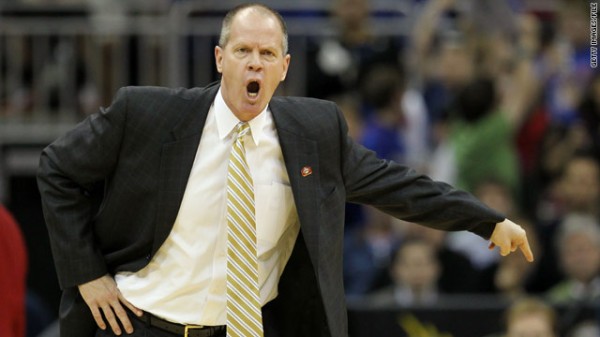Marching to Vegas: Colorado’s Jump-Start Hasn’t Quite Started
Posted by Adam Butler on December 12th, 2014Adam Butler (@pachoopsab) of Pachoops will again be joining us all year, providing us with his weekly take on our favorite conference as we begin the March to Vegas.
The Colorado Buffaloes seem to be developing into a very curious case. Their season hasn’t quite developed the way we thought it would. Thus far the “jump-start” Tad Boyle called last year’s Spencer Dinwiddie-less time appears to have been a preview. When he went down with his season-ending injury, the Buffs had an offensive rating that was – well – offensive. From the injury onward, Colorado’s offensive rating was just 96 points per 100 possessions. This year the Buffs are putting up an improvement on that number, but not by much. They’re scoring 102.1 points per 100 possessions, which would be the second worst mark of the Boyle era. Their defense is stacking up, however, if you look at the numbers. It’s about on par with previous years, ranking just slightly lower than previous campaigns (NOTE: This is a uniquely defensive season).
But there is something different there, too. Colorado is yielding the highest percentage of shots at the rim and from distance. Ever. If we examine the unexamined stat – percentage of shots from two-point distance – we find that teams take just 16% of their shots against them as two-point jumpers. To break this down, Colorado is allowing teams to primarily take the easiest shot (at the rim 40% of the time) or the most rewarding shot (behind the arc 44% of the time). In my estimation, that’s not a recipe for success. It’s also a deviation from how they’ve previously played and – heading into conference play – it’s worth noting that the Pac-12 has two teams in the top 25 in field goal percentage at the rim (Arizona and Utah) as well as two teams in the top 25 in three-point field goal percentage (ASU and Utah). If we’re projecting this out, those seem to be teams that are built to take it right at Colorado’s defense.
But those are just numbers. Colorado actually played a fair game against its proclaimed little brother, Colorado State. Nevertheless, the Buffs still lost at home. That’s generally the sort of thing that doesn’t happen when you’re vying for a fourth straight NCAA Tournament; when you’re projected to be the third best team in a power conference; when your best player (Josh Scott) doesn’t show up in the biggest home game of the non-conference slate (0-of-7 from the field). The narrative surrounding this team was whether they’d become the hunted, an alpha-team capable of taking their rightful spot in the NCAA Tournament. A home loss to Colorado State, a nine-point second half in Wyoming, a senior taking more shots at lesser efficiencies, and varying usage for a best player all seem to add up to further questions in a season when we thought we’d be finding answers.
More questions for you: Is December too soon to ask these kinds of questions? Are we putting the cart before the horse? I read one tweet that called Wednesday’s game a “must-win” for the Buffs. Are we in that territory? I don’t think so. But we also haven’t really discovered anything about these Buffs beyond the aforementioned unencouraging statistics, perhaps the preview. And if the latter half of last season was indeed a preview, then maybe it’s time they jump-start this season.










































